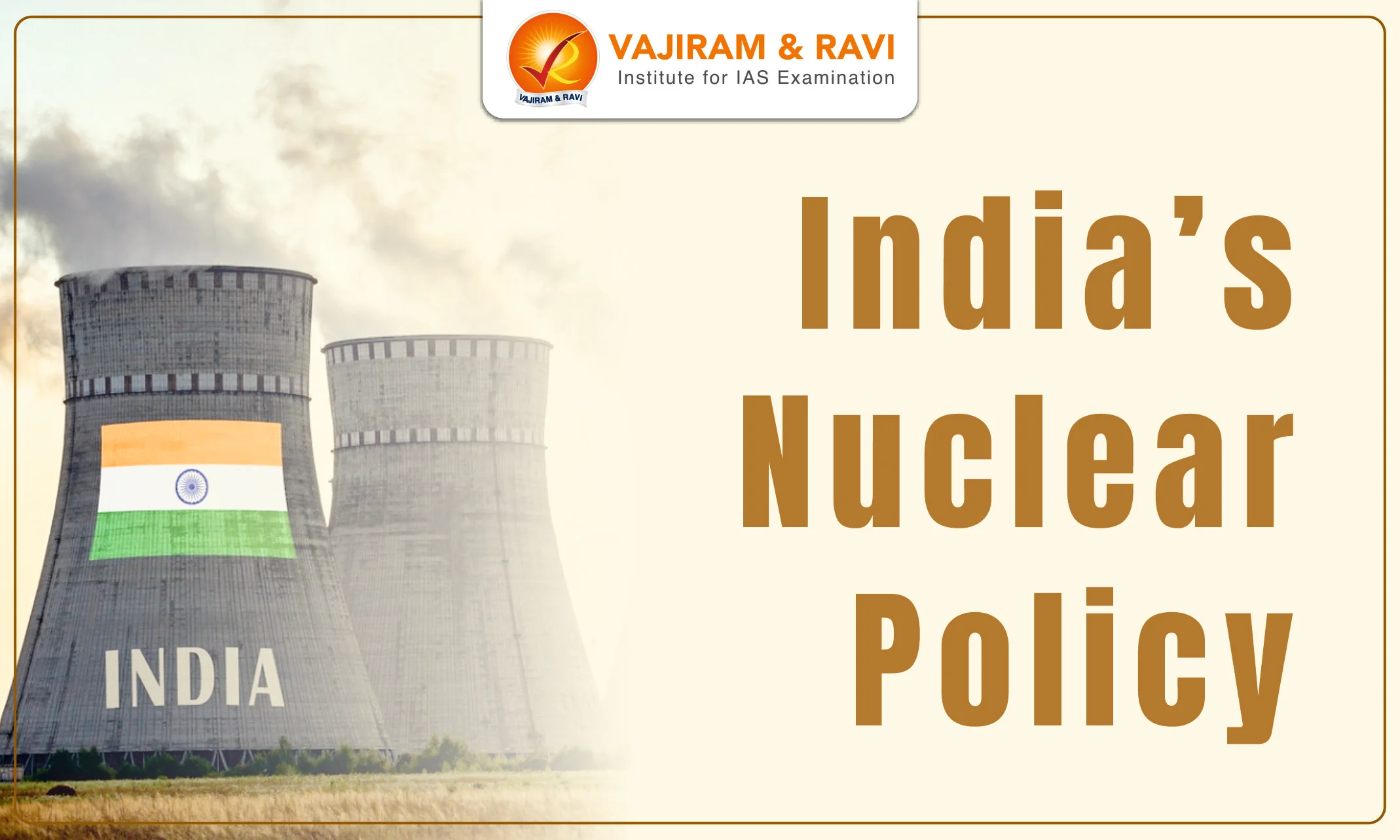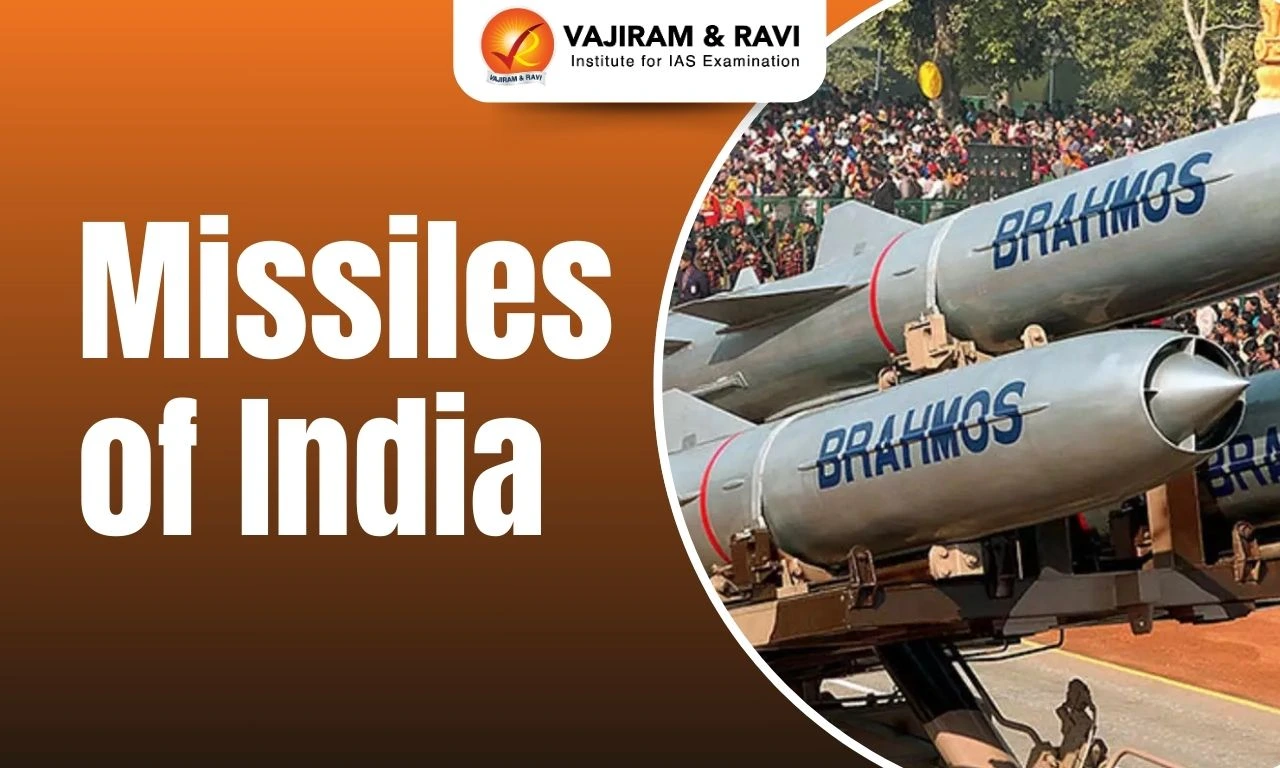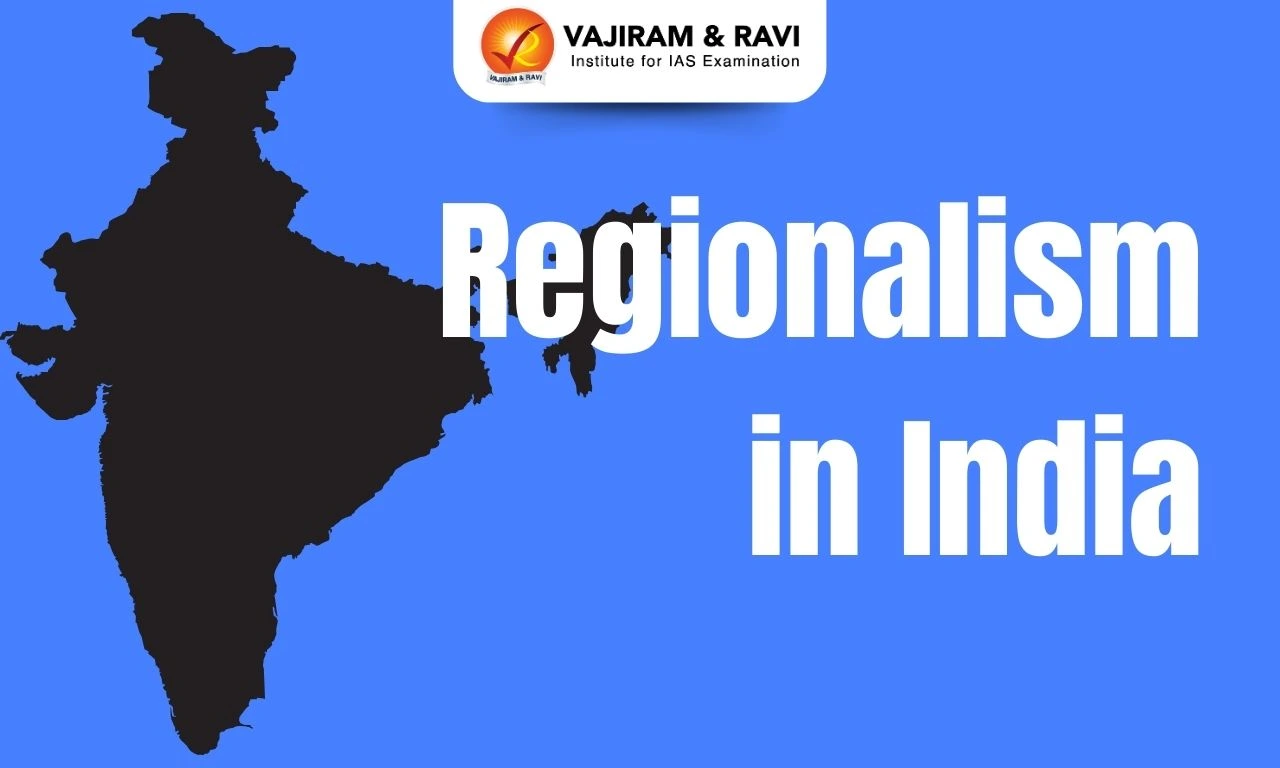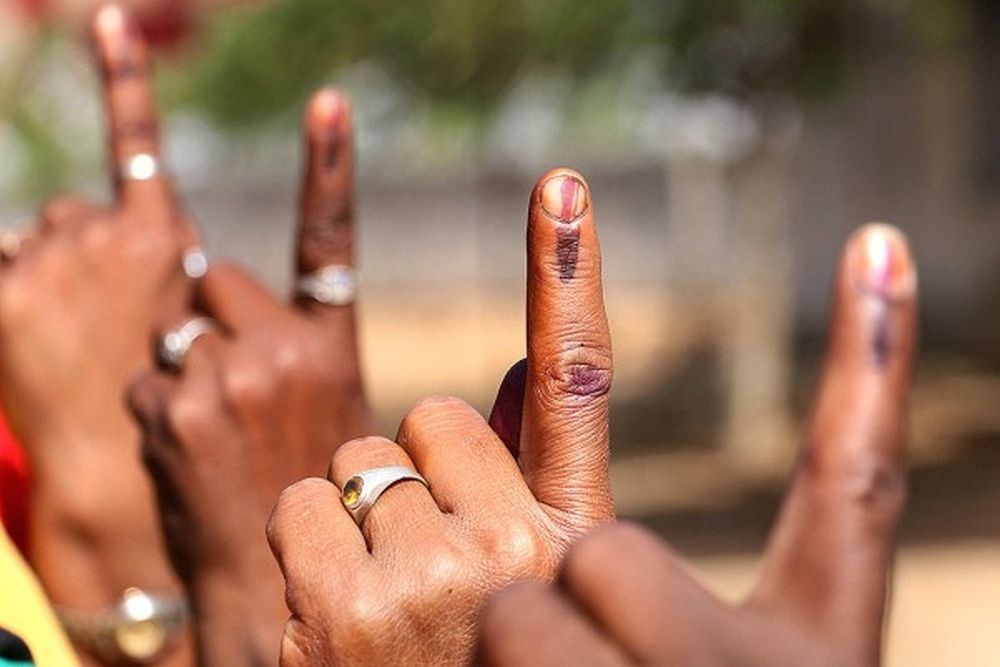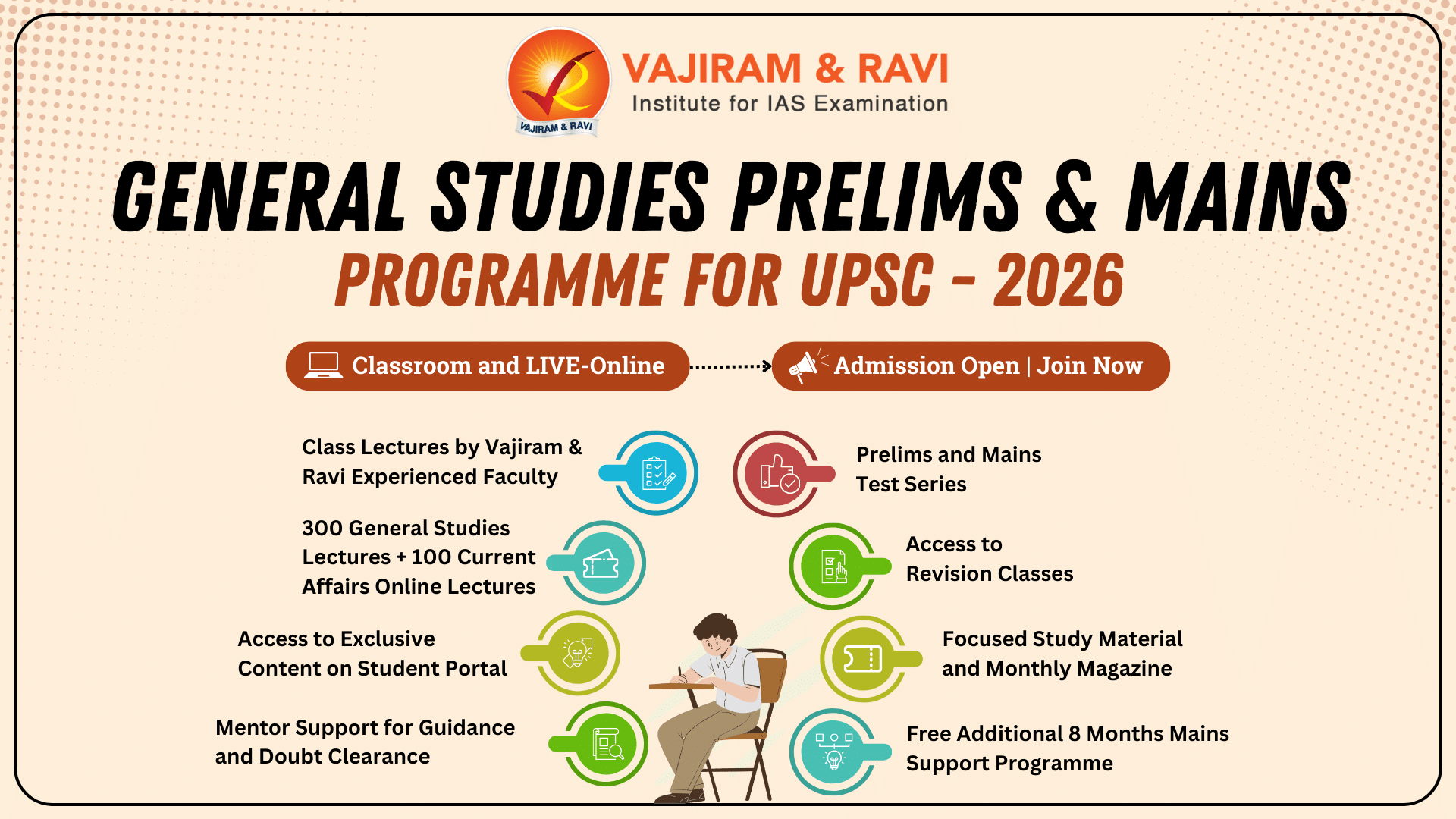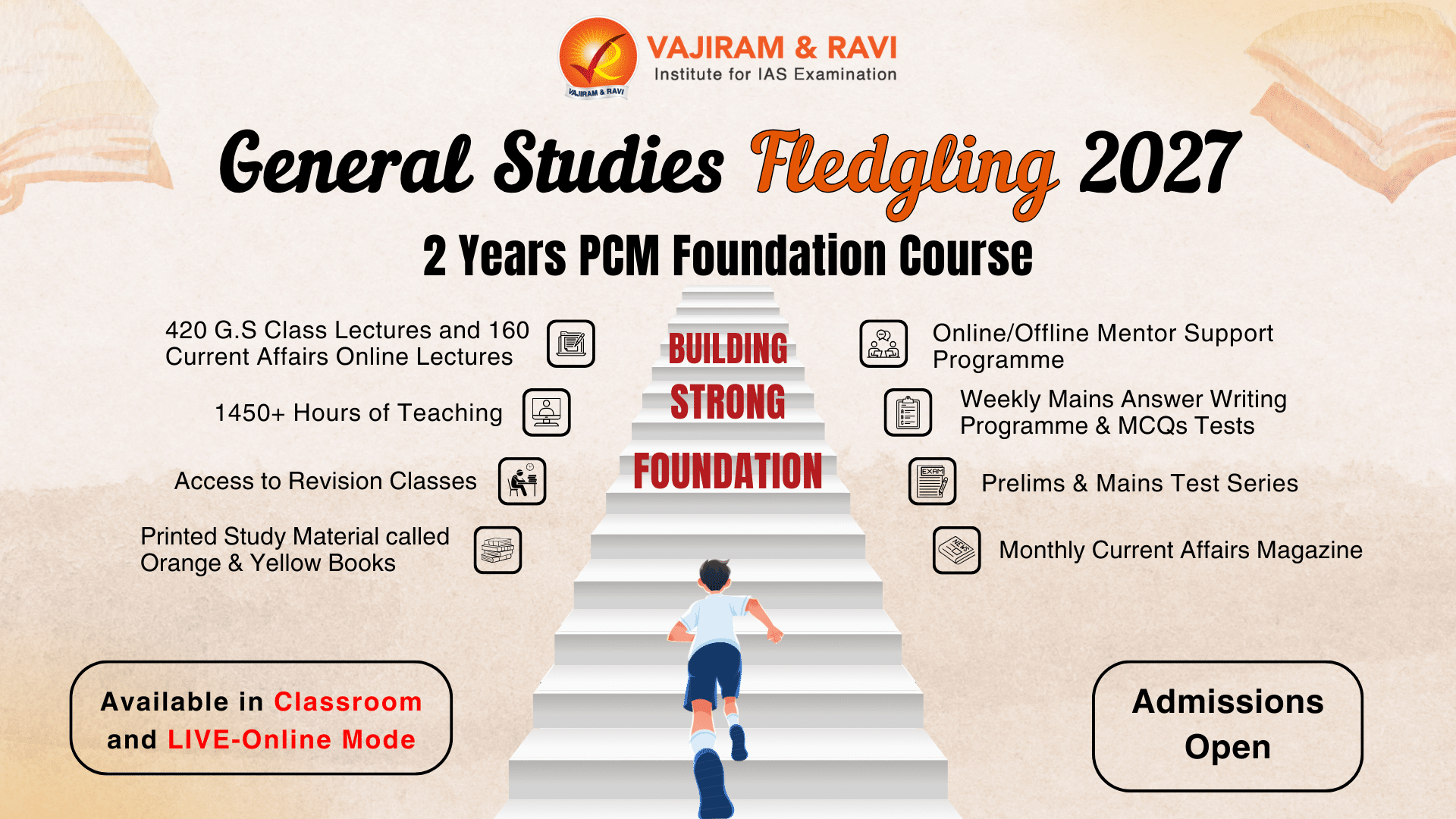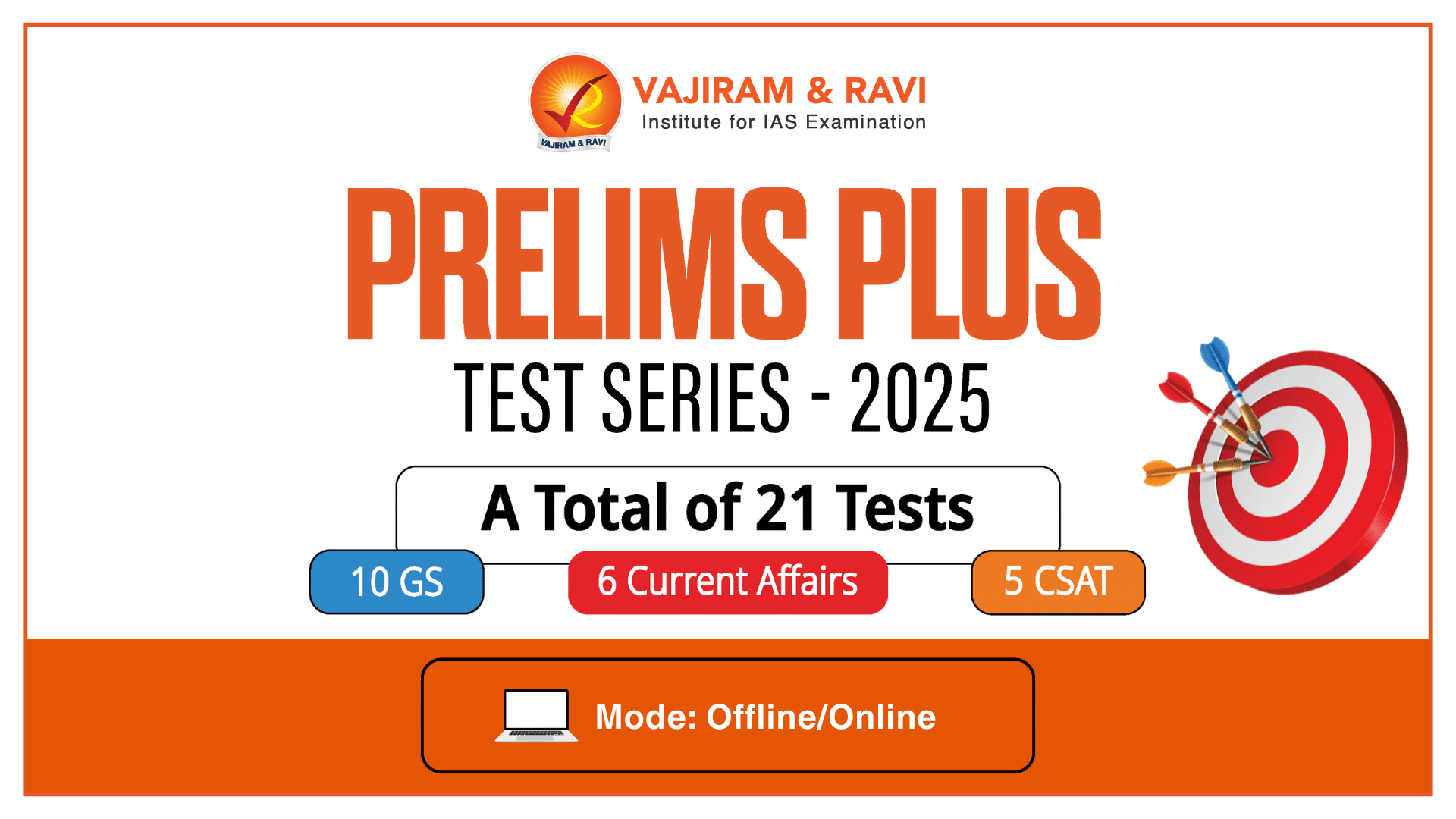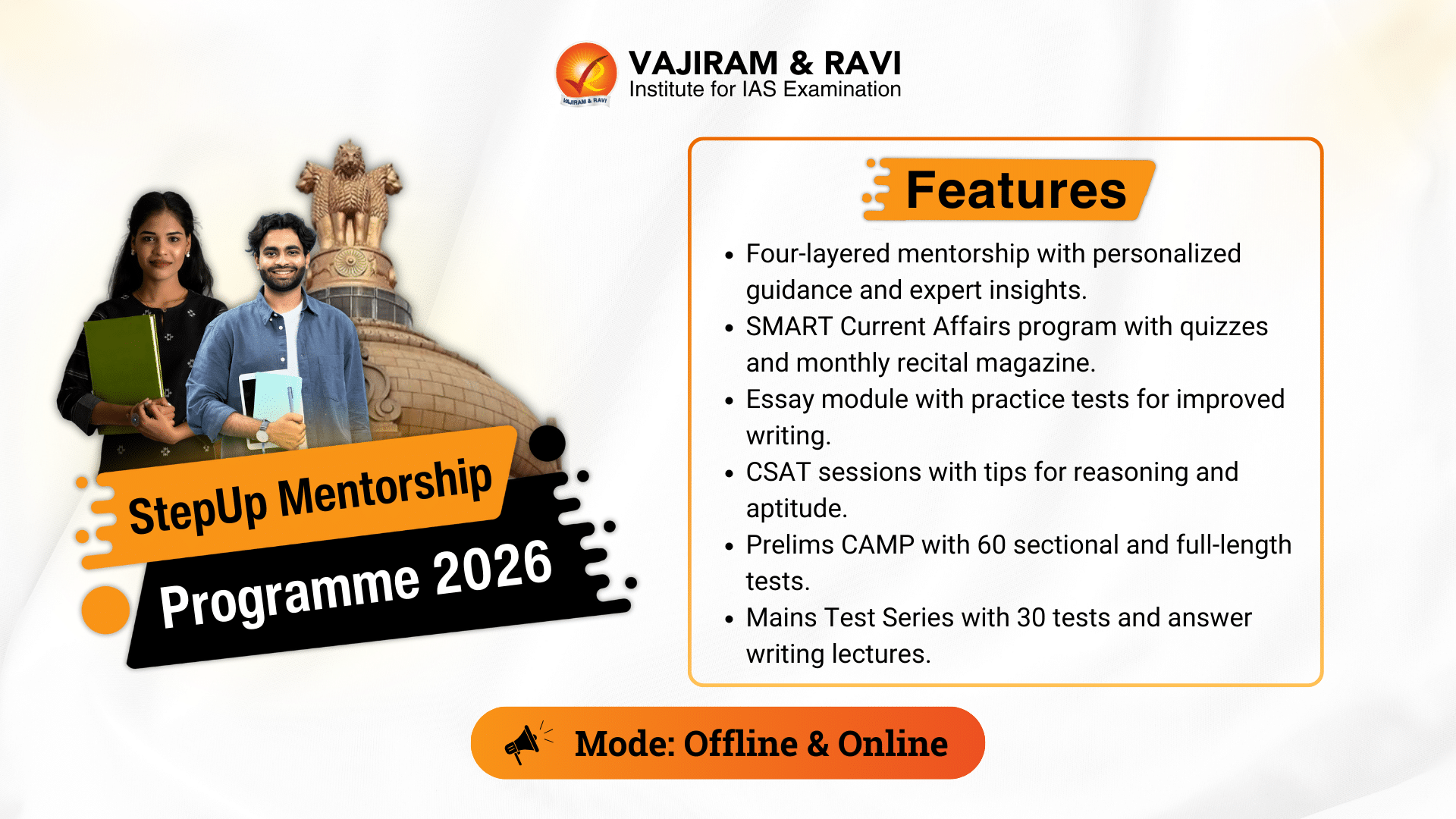What is Nuclear Policy?
Nuclear policy refers to a set of guidelines, principles, and strategies a country follows regarding its nuclear weapons and nuclear energy programs.
- It is required to manage the development, deployment, and use of nuclear weapons and their regulation to prevent proliferation and accidental or intentional use.
- Nuclear policy also encompasses the safe development and management of nuclear energy.
- Nuclear energy can be a source of clean and reliable energy, but it also carries risks, such as nuclear accidents and the proliferation of nuclear weapons technology.
How have India’s Nuclear Policy and Nuclear Programmes evolved since independence?
Passive Phase
- Late 1940s – Nuclear programme of India under the guidance of Homi J. Bhabha was initiated.
- 1945 – Tata Institute of Fundamental Research (TIFR): established by Homi J. Bhabha with the goal of conducting research in fundamental sciences.
- 1948 – The Atomic Energy Commission of India (AEC): It was established as a government agency responsible for formulating and implementing the country’s nuclear policy.
- 1951- First uranium deposit in India is discovered: In Singhbhum district (Jharkhand) by the Geological Survey of India (GSI).
- 1954 – The Department of Atomic Energy (DAE): DAE was created. It has been engaged in the development of nuclear power technology and applications of radiation technologies in the fields of agriculture, medicine, industry, and basic research.
- 1957 – Atomic Energy Establishment, Trombay (AEET): It was established by Dr.Bhabha for a multidisciplinary research program essential for the ambitious nuclear program of India.
- In 1966, AEET was renamed Bhabha Atomic Research Centre (BARC).
- 1963 – The USA and India sign an accord: It stipulated that the USA will supply enriched fuel to India’s Tarapur nuclear power plant.
- 1970 – Non-Proliferation Treaty (NPT) comes into force.
- NPT is an international treaty that aims to prevent the spread of nuclear weapons and promote the peaceful uses of nuclear energy.
- It has three main pillars: non-proliferation, disarmament, and the peaceful use of nuclear energy.
- India and NPT: India has not signed the NPT, citing concerns about the discriminatory nature of the treaty as it perpetuates the nuclear weapons monopoly of the five recognized nuclear weapon states (China, France, Russia, the UK, and the USA).
- 1974 – First Nuclear Explosion, Operation Smiling Buddha (Pokhran-1): India’s first successful nuclear weapons test was carried out at Pokhran, Rajasthan.
- Cause: To become a major player on the global stage and to demonstrate its technological capabilities.
- Further, India had also been facing increasing tensions with its neighbors, particularly Pakistan, and the government believed that possession of nuclear weapons would serve as a deterrent against potential aggression.
- International response: The test was met with widespread condemnation from the international community.
- Cause: To become a major player on the global stage and to demonstrate its technological capabilities.
Active Phase
- 1974 – Nuclear Suppliers Group (NSG) established
- Aim: The NSG is a multinational body that seeks to prevent the proliferation of nuclear weapons by controlling the export of nuclear and nuclear-related materials, equipment, and technology.
- Membership: The NSG consists of 48 member countries. India is not a member.
- Decision Making: The NSG operates on the principle of consensus.
- Role: The NSG plays a crucial role in the international nonproliferation regime, as it helps to ensure that nuclear materials and technology are not transferred to countries that do not have the necessary safeguards in place to prevent the misuse of these resources.
- 1987 – Nuclear Power Corporation of India Limited (NPCIL): NPCIL was established as a public sector undertaking responsible for the generation of electricity from nuclear power.
- 1988 – Pakistan and India signed Agreement on Prohibition of Attacks against Nuclear installations and facilities: Both countries agreed to exchange lists of nuclear installations as part of this agreement and not to attack each others’ nuclear facilities.
- 1998 – Operation Shakti – Pokhran-II: Pokhran-II was the code name for a series of nuclear tests conducted by India. The tests were carried out in Pokhran, Rajasthan.
- They demonstrated the country’s capabilities in the field of nuclear technology.
- International response: The tests were met with widespread international condemnation, as they were seen as a violation of the NPT and other international non-proliferation agreements.
- 2003 – Strategic Forces Command (SFC): It is a tri-service command established to ensure the safety and security of Indian nuclear assets.
- 2003 – India’s Nuclear Doctrine and Nuclear Command Authority (NCA) established
- The NCA is the authority responsible for command, control, and operational decisions regarding India’s nuclear weapons programme.
- India’s nuclear doctrine is a set of guidelines that outline the country’s policy on the development and use of nuclear weapons.
| Principle | Description |
| No-first-use |
|
| Deterrence |
|
| Minimum credible deterrence |
|
| Retaliation only |
|
| Nuclear weapons as a last resort |
|
| Non-use against non-nuclear weapon states |
|
| No use against civilians |
|
| Commitment to disarmament |
|
- 2008 – India-USA Civil Nuclear Agreement: Also known as the 123 Agreement, it allows for cooperation between the two countries in the area of civilian nuclear technology.
- 2009 – India launches the INS Arihant, its first nuclear-powered submarine: The Arihant class is India’s first indigenous nuclear-powered submarine, and the INS Arihant is the lead ship of this class.
- 2016 – Civil Nuclear Agreement with Japan: It focuses on nuclear cooperation in areas like nuclear safety and technology.
- India is the only non-NPT signatory with which Japan has entered into a civil nuclear deal
- 2016 – India complete Nuclear triad: Nuclear triad refers to the country’s capability to deliver nuclear weapons using aircraft, land-based missiles, and submarine-launched missiles.
- India completed the Nuclear triad with the commissioning of INS Arihant.
| Stage | Aim | Fuel | Nuclear Reactor |
| Stage 1 | To establish a domestic nuclear power industry and develop the necessary infrastructure and expertise. | Uranium | Pressurized Heavy Water Reactors (PHWRs) using natural uranium as fuel and heavy water as a moderator. |
| Stage 2 | To develop a self-sustaining nuclear fuel cycle. | Plutonium | Fast breeder reactors (FBRs) using Plutonium developed in the first stage as fuel. They used liquid sodium as a coolant |
| Stage 3 | The goal of this stage is to achieve complete energy independence through the use of domestic fuel resources. | Thorium | Advanced heavy water reactors (AHWRs). They use a mixture of thorium and uranium-233 as fuel. |
Should India review its ‘No-First Use’ (NFU) policy?
The decision to review the NFU policy is a complex issue with arguments on both sides.
- NFU policy should be reviewed: It is argued that the security environment in South Asia has changed significantly since the policy was first adopted.
- India today faces growing threats from state and non-state actors that could escalate to the use of nuclear weapons.
- Also, India’s nuclear doctrine should evolve to reflect its growing military capabilities, strategic interests, and regional dynamics.
- NFU policy should be continued: Some experts argue that the NFU policy has served India well and that there is no need to review it.
- They argue that abandoning the NFU policy could lead to a destabilizing arms race and increase the risk of nuclear conflict in the region.
Thus, any change to India’s nuclear doctrine should be based on a thorough evaluation of its costs and benefits and should aim to enhance India’s security and stability in the region.
What should be the way forward for India’s Nuclear Policy?
Some of the steps that can be taken to ensure the development of India’s Nuclear Policy are:
- Nuclear disarmament: India should continue to pursue this goal through diplomatic efforts and by engaging with other countries and international organizations.
- Non-proliferation: India should continue to work towards strengthening the global non-proliferation regime and preventing the spread of nuclear weapons and technology.
- Nuclear energy development: Expanding the nuclear energy programme to meet growing energy needs accompanied by strong measures to protect against nuclear accidents and the proliferation of nuclear weapons technology.
- Regional security: India should also continue to pursue a policy of deterrence to ensure regional security while engaging in dialogue and confidence-building measures with its neighbors to reduce tensions and promote stability in the region.
Last updated on April, 2025
→ UPSC Notification 2025 was released on 22nd January 2025.
→ The UPSC Vacancy 2025 were released 1129, out of which 979 were for UPSC CSE and remaining 150 are for UPSC IFoS.
→ UPSC Admit Card 2025 is expected to release in first week of May for CSE Prelims Exam 2025.
→ The UPSC Prelims 2025 is scheduled to be conducted on 25th May 2025 and UPSC Mains 2025 will be conducted on 22nd August 2025.
→ Apply once through it and aspirants can apply for various government exams conducted by UPSC.
→ The UPSC Selection Process is of 3 stages-Prelims, Mains and Interview.
→ UPSC Result 2024 is released with latest UPSC Marksheet 2024. Check Now!
→ UPSC Toppers List 2024 is released now. Shakti Dubey is UPSC AIR 1 2024 Topper.
→ Also check Best IAS Coaching in Delhi
India’s Nuclear Policy and Nuclear programmes FAQs
Q1. What is the International Atomic Energy Agency (IAEA)?+
Q2. What are Multilateral Export Control Regimes (MECR)?+


